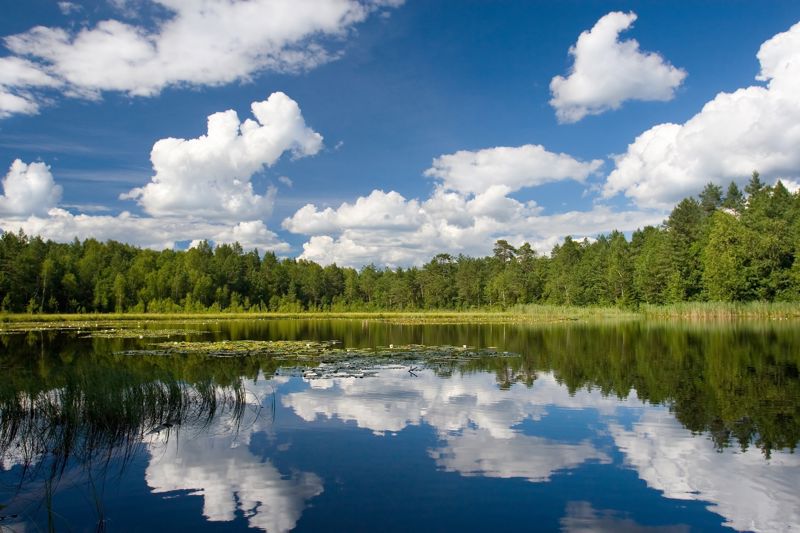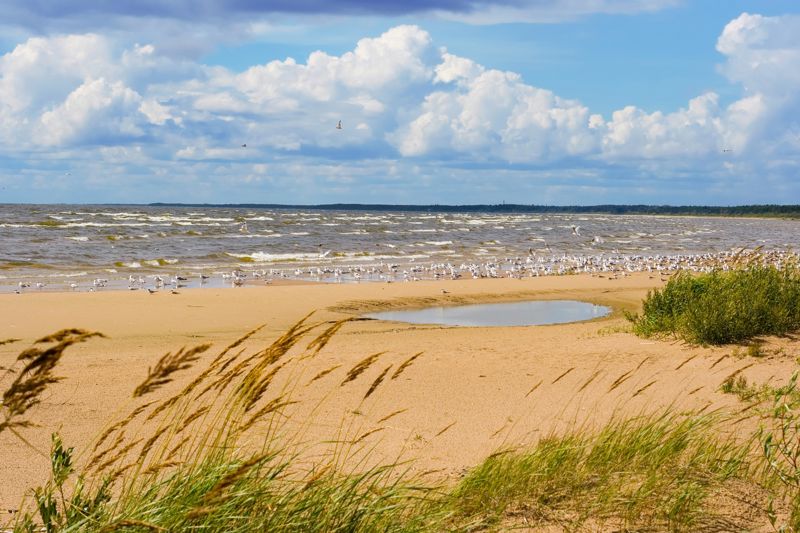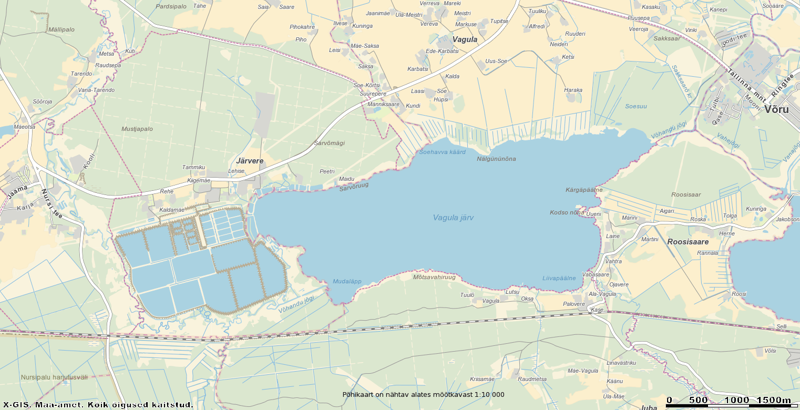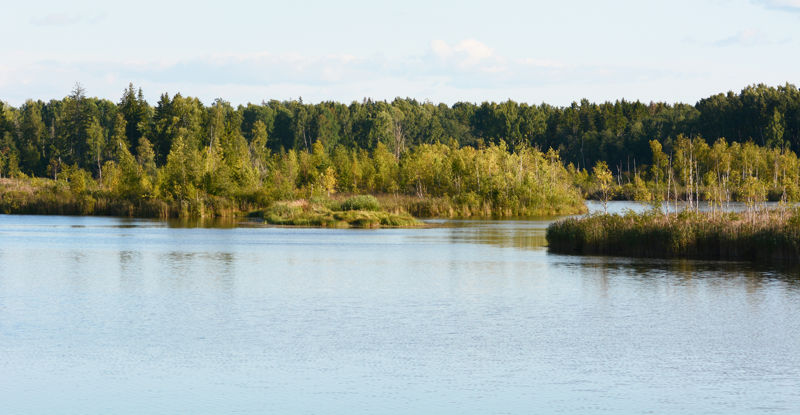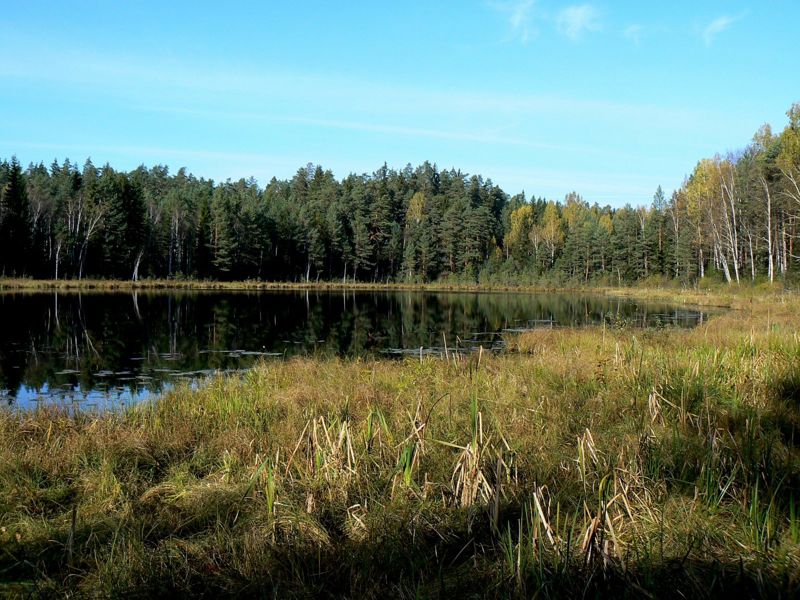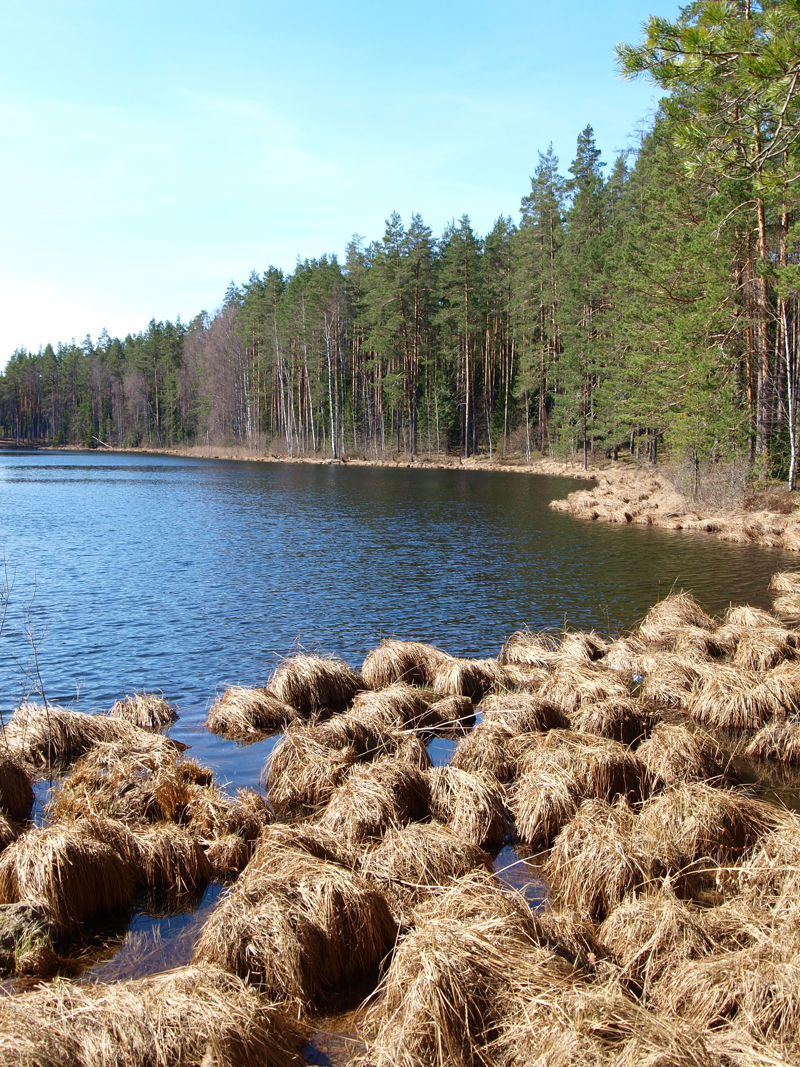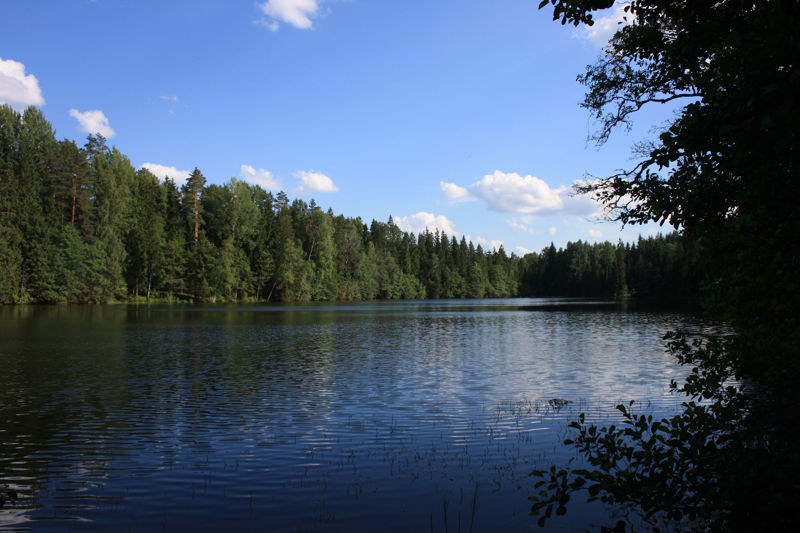- Why do lakes change over time?
- What is the difference between an open and a closed lake?
- What does the lake's biodiversity depend on?
What do the properties of lake water depend on?
The properties of lake water, such as transparency and temperature, depend on how quickly the water in the lake changes. This, in turn, depends on the amount of water flowing in and out of the lake.
Small forest lakes are usually transparent. Their surface water layer heats up strongly on a calm and sunny summer day, but the deeper layers remain cold. In shallow and large lakes, the water temperature is more even because the waves caused by the wind help to stir the water, so water is often less transparent in these. This is especially true when a large river flows in and brings sand and mud. Due to their murky water, bog lakes are more cloudy.
- The water temperature in a large lake is more even than in a small one.
- The bog lakes are the most transparent.
- The transparency of the water and the temperature in the lake depend on how fast the water changes.
The water in lakes changes at different speeds
When a river flows into a lake, it usually flows out of it as well. In open lakes, with both surface inflow and outflow, the water can change dozens of times a year.
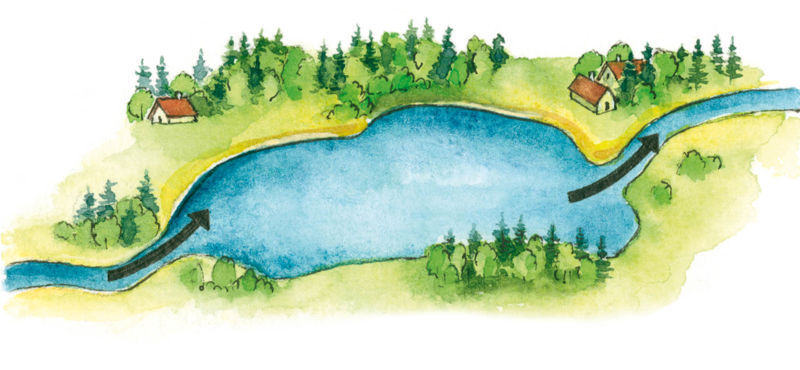
If a lake gets its water from precipitation or groundwater, it is said that the lake has no surface inflow, and the water changes much slower there. In such lakes, the water is only completely renewed once every several years.

Closed lakes have no outflow. Water enters through rivers or streams, but water does not flow out of the lake. Gradually, the water evaporates or infiltrates the ground and becomes groundwater. The water exchange in closed lakes is, of course, particularly slow. Closed lakes may become saline over time because the inflow brings in dissolved minerals that cannot escape the lake.
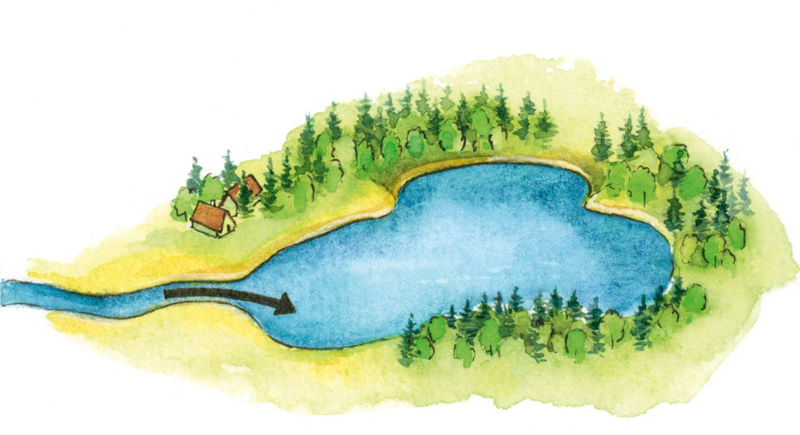
Think!
- Think about the water cycle. Why is the water in closed lakes salty in the hot climates?
Rivers bring nutrients to the lake
Small, deep lakes with no surface inflow are usually clean and clear, especially if they are far from human settlements. Some of these lakes are oligotrophic, meaning that they lack nutrients and therefore have not much vegetation. This means light can reach farther into the water, and typically there is a lot of oxygen at the bottom thanks to the cold water, which can hold more oxygen than warm water. Thanks to this, fish species like trout can live there, but there isn't a lot of biodiversity. Such lakes are quite rare nowadays, and their number is declining further due to pollution from humans.
If a river or a stream flows into a lake, it brings nutrient-rich sediments with it. Nutrients enter the river with sewage from settlements and runoff from animal farms and fields. Due to all this, more and more lakes have become eutrophic. Eutrophic lakes can support the growth of many aquatic plants and algae because there are a lot of nutrients. There are especially many eutrophic lakes near large settlements, where the impact of human activities is more noticeable.
Nowadays, the amount of nutrients in the water might grow too fast, and the vegetation in many lakes tends to grow excessively every summer. If there are many plants and animals in the lake, oxygen deficiency may occur at night or in winter under ice cover, and many of the organisms will die.
The nutrient content of a lakeits biodiversity. lakes have a muddy bed and theysupport the growth of many plants and algae. lakes have clear water and they usually . The nutrient content of lakes isdue to human activity.
Ageing of lakes
The lakes that formed after the ice age were clear, but poor in life. Over time, the rivers carried sand, clay and mud, and nutrients needed for plant growth in the lakes. Aquatic plants began to grow on the sediments accumulated in the bottom, which provided food for the fish and laid the foundation for the diversity of all aquatic life.
The amount of nutrients in the water affects the development of the lake community and species richness - but also their ageing. It is a natural process for lakes to age, i.e. to become shallower and smaller over time. In the past, the impact of human activities on the environment was small, and the lakes aged very slowly. Today, this process has become faster. The lake bottom is covered with a rapidly thickening layer of mud, and vegetation starts to fill up the lake. Over time, the plants conquer the whole lake; the lake fills and turns into a mire.
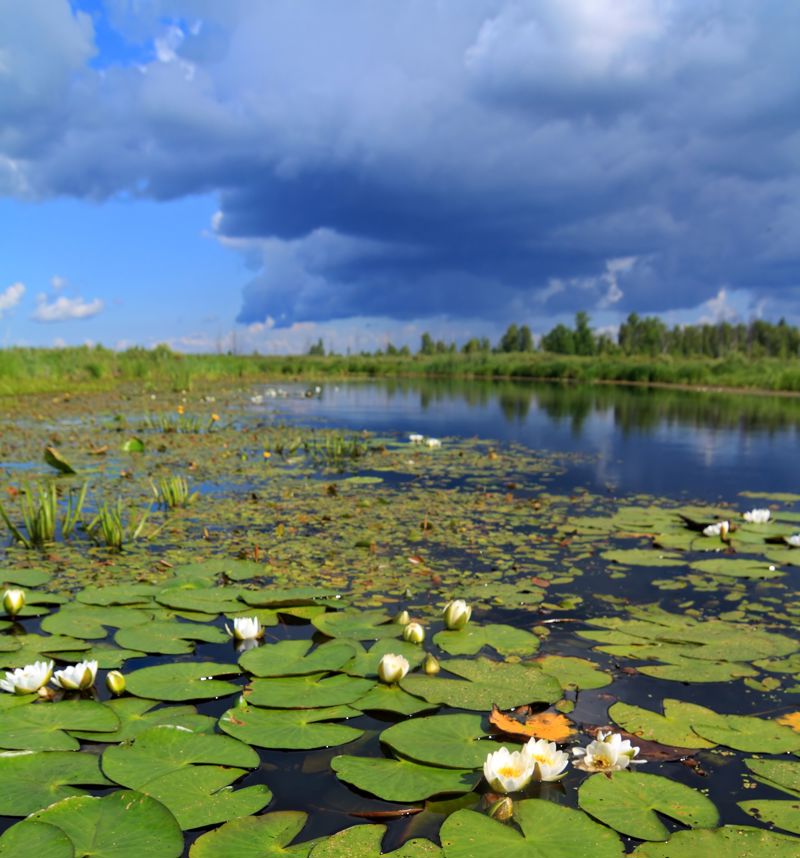
- Aquatic plants begin to grow on the sediments that have accumulated in the bottom.
- The lake is poor in life and has clear water.
- Rivers carry sand, clay, mud and nutrients to the lake.
- The layer of mud thickens, the plants conquer the whole lake.
- The lake fills completely.
- Plants and other organisms decompose, and more and more nutrients accumulate in the water.
What is the importance of lakes?
Lakes make nature richer, which is why they must be preserved and protected.
For ages, lakes have been used for fishing, and as a means of transportation. Today, lakes are also used for fish farms, and their water supplies households and businesses. Fertiliser and medicinal mud are produced from the mud settled at the lake's bottom; limestone from the lake bed can even be used to make chalk.
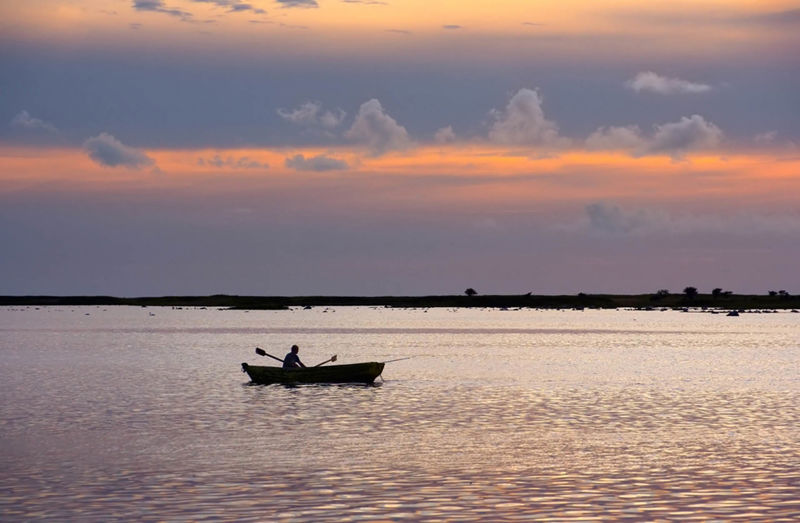
When the river water is blocked with a dam, an artificial lake or reservoir is created behind it. This is done for water collection, electricity generation, or other purposes. More and more hiking trails are built on the shores of lakes for nature lovers.
- To produce electricity
- As a water reservoir
- For fishing
- For drinking water
- For growing vegetables in the water
- To produce fertilizer
Think!
- What do people do to ensure that the water flowing into the lake has a proper balance of nutrients?
I now know that…
Lake water's transparency and temperature are dependent on how rapidly the water in the lake changes. This, in turn, depends on the amount of water flowing in and out of the lake. Lakes can be either open or closed. Oligotrophic lakes have clear water, and they have few nutrients. However, nowadays, most lakes are eutrophic. This means that they are rich in nutrients and therefore have high biodiversity, as long as there aren't too many nutrients. Over time, lakes age. They become smaller and shallower. People catch and farm fish in the lakes, and lake water is used to supply households and companies.
